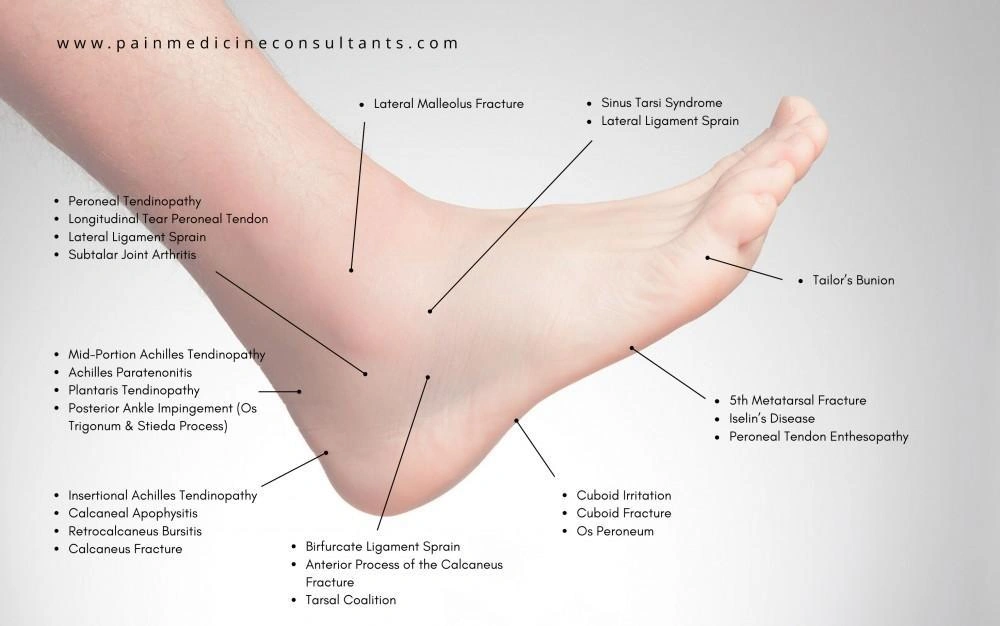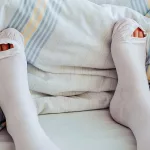
Wait, Is Your Heel Trying to Tell You Something?
Most people don’t realize that their feet—especially those poor, overworked heels—have a whole secret language. You wake up, step out of bed, and it’s like… wham, a bolt of pain shoots through your heel. Or maybe it’s that dull, grumpy ache that follows you around each day (always worse when you really need to stand, right?).
You might shrug it off at first. “It’s just old sneakers,” you tell yourself. Or, “I probably overdid it running after the dog.” But what if that pain is your heel waving a big red flag, begging for a little detective work? That’s where something surprisingly simple, like a heel pain identifier chart, suddenly becomes your secret weapon. Stick around—I’m going to walk you through exactly how this thing works, why it’s genius, and how an ordinary chart could get you back to skipping (or just walking comfortably) in record time.
Morning Stabs or All-Day Grumbles?
Okay, real talk: there’s nothing like that first toe-curling step in the morning if you’re dealing with heel trouble. It’s almost like your foot is punishing you for resting. (I’ve muttered some choice words at my socks more than once… No shame.)
Here’s the thing: when you feel the pain is a big clue to what’s up. Think of your heel as trying to send a message by Morse code. Sharp pain with your first steps? It could be your plantar fascia—this thick band of tissue under your foot—pulling a grumpy stretch after a night off. According to research on foot pain charts, that stabbing sensation? Classic sign of plantar fasciitis (which, by the way, is just as annoying as it sounds) foot pain chart insights.
But maybe your pain creeps in after a long shift at work. Or at the gym, right when you think you’re crushing it. Heel pain isn’t always punctual—sometimes it pops up to keep you humble, no matter the hour.
That “Aha!” Moment: Comparing Types of Heel Pain
This is where a chart comes in super handy. (Honestly, I wish I’d checked one sooner.) Using a good heel pain identifier chart, you can match your pain’s “schedule” and exact spot to likely culprits. I’ve done those late-night Google spirals—”stabbing heel pain AM” or “why does my left heel only hurt after Zumba??”—and always end up on a site with a pain chart. But hey, those charts really do help you connect the dots, faster than any guesswork will.
Story Time: The Jogger and the Awkward Mornings
A friend of mine, Jenny, used to hop (okay, limp) to the bathroom every morning. She thought she was just getting older until she glanced at a heel pain identifier chart after yet another bad run. Turns out, classic plantar fasciitis. She started doing some stretches before bed and—no joke—her morning heel horror-show calmed way down within weeks. (I asked for her secret and she just winked, “Charts and yoga, babe.”)
The Real Sneak Attack: Are Your Shoes the Villain?
Let’s get personal for a moment… How old are those shoes you love? If you had to think about it, it’s probably too long. Sometimes, your trusted kicks are the culprit, quietly making your heels miserable.
The wrong shoe can be like walking with a tiny rock under your heel. Too little cushion? Shoes that pinch? No arch support? That’ll do it. Swap to a fresh, supportive pair—and maybe add a simple insert—and you could be dodging heel pain left and right. (I might have hugged my new sneakers the first week I tried this.)
A Tale of Two Pains: Achilles vs. Plantar
Let’s play heel detective for a second, yeah?
| Symptom | Plantar Fasciitis | Achilles Tendonitis |
|---|---|---|
| Location | Bottom of heel or arch | Back of heel (where it meets the leg) |
| When it Hurts Most | First steps in the morning, after sitting | During or after workouts, uphill walking |
| Feels Like | Stabbing, sharp pain | Ache or burning pull |
I once had an Achilles scare after I tried a new HIIT class (those instructors are wild). The pain trailed up the back of my heel, especially going up stairs. It was like my tendon was being stretched whether I wanted it or not. I plugged in my symptoms on a heel pain identifier chart and bam: Achilles tendonitis, loud and clear. What helps most? Gentle calf stretches, less jumping, and—seriously—stop trying to impress the gym crowd. Lesson learned.
More Than One Heel Villain
Here’s what nobody tells you: not all heel pain is the same. Some is sharp and sudden, some just nags. Some comes from hidden bone trouble, others from simply doing too much.
Heel Spurs: The Unwanted Souvenir
Heel spurs sound dramatic—like you’re growing a tiny unicorn horn… but let’s be real, most are painless. If your heel pain identifier chart points to a deep, drilling ache, don’t freak out about the word “spur.” A lot of times it’s just extra bone from chronic strain—especially if you’ve been battling plantar fasciitis for ages. (My aunt had one and calls it her ‘bonus bone’… she loves to show off her X-ray after too much wine.)
Quick Story: Mountains, Misery, and Relief
One summer, a buddy tried hiking Half Dome with what he swore were just “sore feet.” Two days later? Limping, convinced he had spurs. One look at a pain identifier chart and he realized it matched classic overuse pain, not a medical emergency. A week with rest, ice, and new hiking boots put him right back to mountain man status.
Stress Fractures: Hidden Cracks, Real Pain
Not all heel woes are soft tissue. Sometimes, heel pain comes from tiny cracks in the bone itself—stress fractures, the “silent screamers” of the sports world. The pain might start as a whisper, then turn sharp with every step, especially after those sneaky long runs or sudden gym obsessions.
Have you ever noticed your heel really complaining at the end of a high-impact week? I ignored it (bad move), but a well-timed chart review and a real doctor’s visit saved me months of frustration—plus, I got a guilt-free excuse to binge-watch murder mysteries while I healed.
Rest or Go? Here’s What Actually Helps
This one’s universal: if you’re limping, swelling, or your pain gets worse with activity, give that heel a break. If it’s mild and settles with ice, go slow. But don’t “tough it out” for weeks. Early charting and a quick check with a health pro will always save you pain (and time).
Real-World Solutions: Less Pain, More Go
Alright, let’s make this practical. What can you actually do about heel pain—aside from consulting your magic pain chart?
Stretch, Chill, Repeat
A little daily TLC works wonders. Try putting a towel under your toes and gently pulling them back before you get out of bed. (It feels awkward. Do it anyway. Your heels will thank you.) Calf stretches and rolling your foot over a cold can also work mini-miracles. These aren’t doctor-level fixes, obviously, but they take the edge off—sometimes that’s enough to get through the day.
Why Your Morning Matters
Bedtime stretches and supportive slippers first thing—my neighbor swears by them. She tracked her progress on her heel pain identifier chart and went from walking on eggshells to actually enjoying her morning stroll (without having to fake a cheerful “good morning!” to the mailman).
Gear Up: Small Swaps, Big Wins
Supportive shoes and a decent insert—it sounds boring, but it’s a true game-changer. Flimsy flip-flops and worn-down gym shoes might be cheap, but so is ice cream, and that doesn’t mean you should feast on it for breakfast. (Actually, don’t knock breakfast ice cream until you try it. Kidding. Mostly.)
Beyond DIY: When to Bring in Backup
If your heel is still shouting after two weeks of home hacks? Please—let an expert take a look. Chronic pain is nobody’s badge of honor. And yes, I know, sometimes it’s tough to know if you’re being dramatic. That’s what charts are for: track your symptoms, show your doctor, and leave the guesswork at home.
| Level | Home Fixes | Pro Help |
|---|---|---|
| Easy | Ice, stretching, better shoes | — |
| Moderate | Rest, foot roller, inserts | Physical therapist for custom plan |
| Last Resorts | Wear a brace, night splint | Injections, advanced therapy, rarely surgery |
Charting Your Own Comeback
If you take anything from this, let it be this: heel pain doesn’t have to stick around forever—and it definitely shouldn’t control your day. Slow down. Take a moment, look at a heel pain identifier chart, and get a feel for what’s really going on underfoot. Sometimes, the fix is simpler than you think (stretch, swap your shoes, chill with the running).
Here’s what I’ve learned the hard way: by the time you realize heel pain’s not normal, it’s usually been bugging you for a while. So, why wait for it to get worse? Tune in, track your symptoms, and—if your chart’s telling you to rest, see a pro, or try a new routine—listen. Your future self (the one who actually enjoys dog walks again) will genuinely thank you.
Your Turn: Will You Listen to Your Feet?
Alright, confession time: I used to ignore my body all the time. With heels, though, the longer you wait, the tougher it gets. That’s why these charts and simple fixes matter—they put you in control, not the mystery ache in your shoe. Start by grabbing that heel pain identifier chart. Think about your habits. Notice when—and where—the pain crops up. Change one thing this week, even if it’s just adding a five-minute stretch or tossing those ancient sneakers. Who knows? You might be surprised at how much lighter, happier, and pain-free you feel when you give your heels what they need.
Ready to step into something better? Your feet—and your mood—will thank you.


















Leave a Reply
You must be logged in to post a comment.